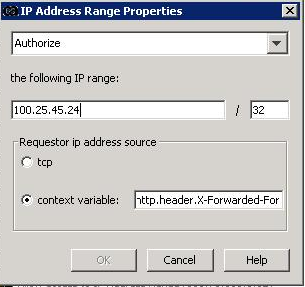Hello All,
Can someone please clarify me about this 2 options and provide the solution.
I am doing IP validation to my REST APIs to restrict the access, for that when i add the IP i am using ${request.http.header.X-Forwarded-For} to in Context Variable and at the same time i am adding audit details to print the IP but IP is not printing in the audit events.
When i use ${request.tcp.remoteIP} this in audit events the IP is printing but i didnt changed my context variable from ${request.http.header.X-Forwarded-For} to ${request.tcp.remoteIP}.
Now tell me whatever the IP i am getting that is client IP or not?
If Yes, why i am not getting the IP when i use this ${request.http.header.X-Forwarded-For} ?
Please find the configuration below.


Let me know if you need any other information required.